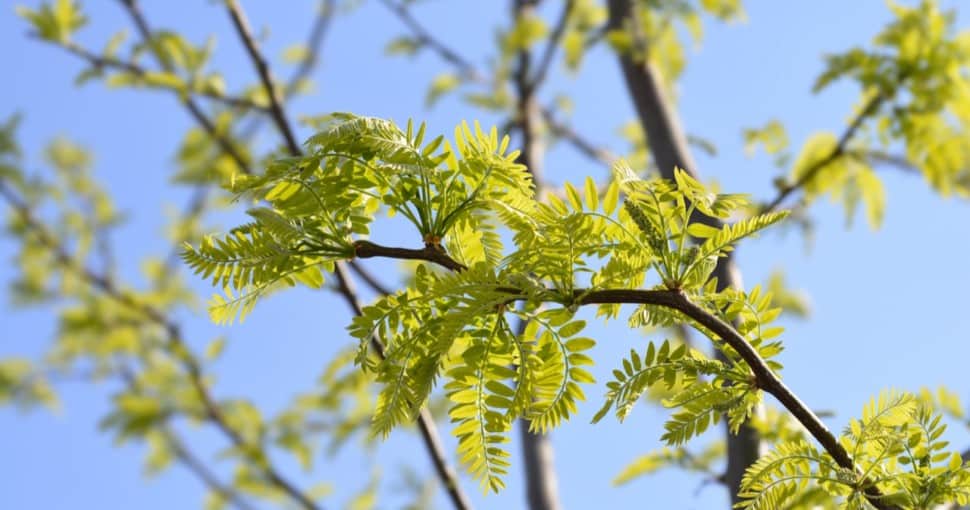The honey locust is an aggressive, invasive colonizer because it produces abundant seeds and root suckers and can grow in dense stands, crowding out other plants. It belongs to the pea family of trees, Fabaceae, and is also called the Thorny Locust, Sweet Locust, or Sweet-bean. Once planted, it can be a challenge to control the spread of locust trees.
Contents
Let’s look at the characteristics of the Honey Locust so we can draw some easy comparisons with similar trees.
- The Honey Locust doesn’t fix nitrogen in the soil like many other pea family members.
- The Honey Locust has edible, sweet-tasting pods that emit a strong sweet odor when ripe. Animals love to feed on them.
- The thorns can inflict severe wounds that heal slowly. The thorns can cause infections in wildlife, livestock, and humans. They can also damage vehicle tires, even after the plant has died.
- The flowers of the Honey Locust provide nectar for honey bees and other insects.
- The Honey Locust can tolerate poor soil, damp environments, and drought. It needs full sun to thrive. It can grow in many different soils, but its favorite is flood plains along rivers.
- The Honey Locust is regarded as an invasive tree in countries such as Australia, where planting or selling it may be illegal. It competes with indigenous vegetation in these places, eventually replacing it altogether.
- It grows around twenty meters tall, is long-lived, and is highly resistant to pests.
There are over twenty species of locust trees belonging either to the Gleditsia or Robinia genus. The common Honey Locust belongs to the Gleditsia genus, while the Black Locust belongs to Robinia. Some plants in the Robinia genus, including the Black Locust, are highly toxic.
1. The Black Locust (Robinia Pseudoacacia)
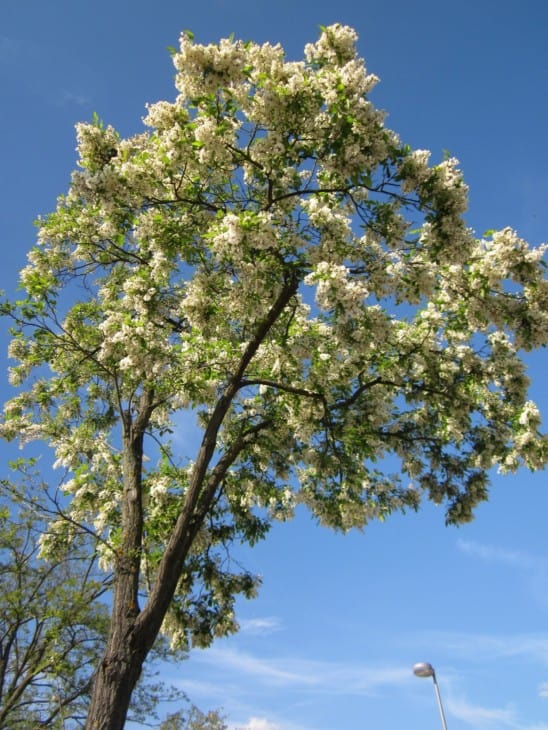
The Black Locust is a large tree that can grow in poor quality soil like the Honey Locust, but it is a nitrogen fixer, unlike the honey locust. Like the Honey Locust, it is regarded as an invasive species in some places, including Europe and South Africa, and Connecticut, Maine, and Massachusetts in the US. Like the Honey Locust, it proliferates from abundant seed and sucker production.
It can be distinguished from the Honey Locust by its large clusters of showy white flowers. Unlike the honey locust, the pods, leaves, thorns, and inner bark of the black Locust are highly poisonous to people, dogs, cats, poultry, sheep, cattle, and horses. It also has two-inch-long sharp thorns on its branches that livestock can eat accidentally, leading to extreme pain.
2. Bristly Locust (Robinia Hispida)
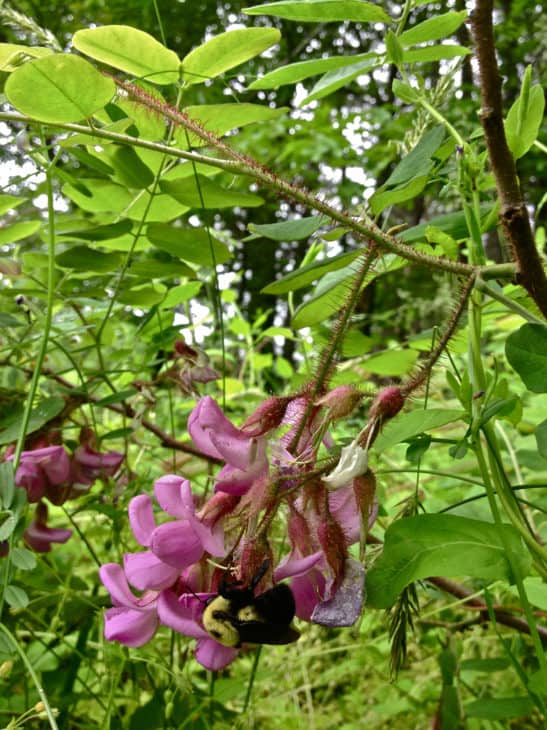
The Bristly Locust is more of a shrub than a tree, with an average height of only eight feet. Like the Honey Locust, it is an aggressive invader because it propagates via root suckers that it puts out in profusion. It forms dense stands crowding out other plants. Like, the Honey Locust, it is tolerant of poor soils.
The tree is also known as the rose acacia, and the stems are densely covered in red bristles.
Like the Honey Locust, the Bristly Locust is considered invasive in some places, including Washington, New Jersey, Ohio, Michigan, and Pennsylvania. Unlike the Honey Locust, all parts of the plant are poisonous.
3. The Thornless Honey Locust (Gleditsia Triancanthos f. Inermis)
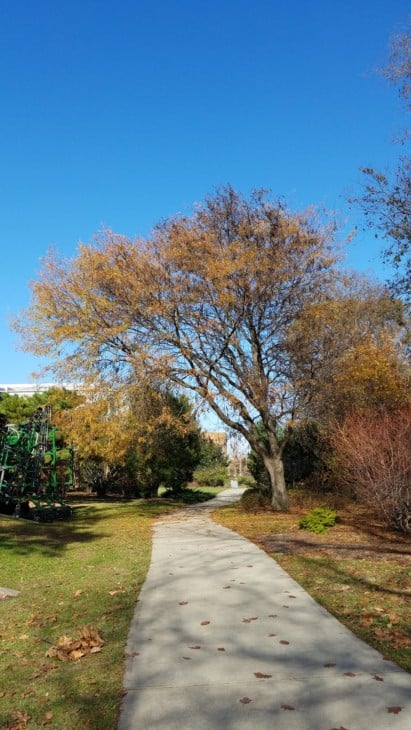
The Thornless Honey Locust is a variety of the Honey Locust that grows rapidly to around seventy feet in height. It doesn’t have the common Honey Locust’s nasty thorns and has elongated pods between six and twelve inches long. It is used in urban areas because of its ability to survive in poor soil, air pollution, compacted soil, and high drought tolerance.
The roots can be a problem because they grow close to the surface and push up paving and sidewalks. It is generally healthy and hardy but can be attacked by mimosa webworm, leafhoppers, pod gall midges, spider mites, bagworms, and leaf miners in overplanted areas.
4. The Japanese Locust (Gleditsia Japonica)
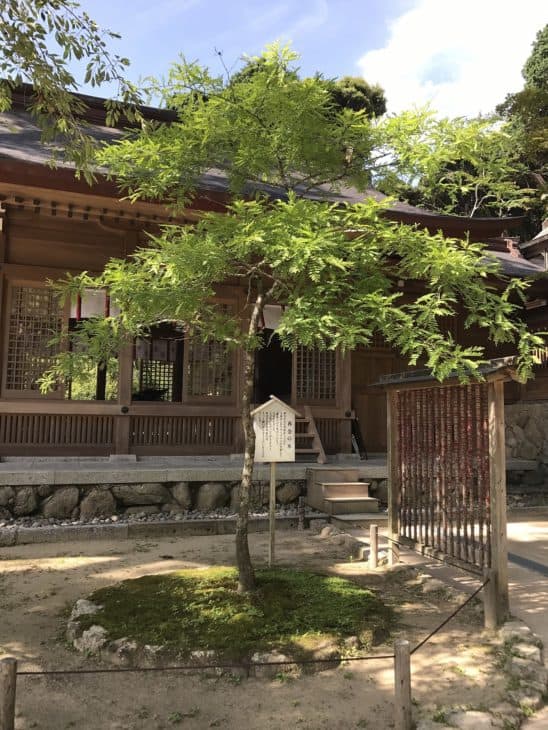
Like the Honey Locust, the Japanese Locust is a large deciduous tree that can grow up to sixty-five feet. Its trunk and branches are covered in ten-inch long thorns, so it’s pretty nasty. The sweet pods are edible, and in Japan, the seed is roasted, dehusked, boiled, and eaten with sugar.
As its name suggests, it isn’t native to the US but Japan. However, as with many plants, it has made its way into other countries. However, it is not considered invasive like the common Honey Locust.
5. New Mexico Locust (Robinia Neomexicana)
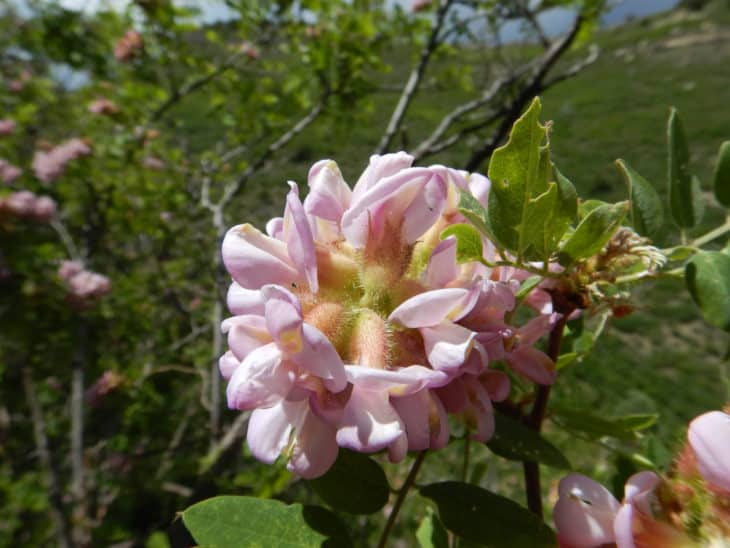
Despite its name, the New Mexico Locust is native to the southwestern United States. It is similar to the Bristly Locust and the Clammy Locust and belongs to the same genus as the Black Locust. The New Mexico Locust is more of a shrub than a tree growing to an average height of ten feet. However, it may grow into a small tree under certain environmental conditions.
The New Mexico Locust, like the Honey Locust, spreads rapidly and sprouts prolifically, and in some areas, it is regarded as a problem plant in forestry for this reason. It has beautiful pink to light purple flower clusters and bristles on the twigs, fruit, flower stalks, and leaf stalks. The sweet-smelling flowers were eaten raw by human tribes, and mule deer, porcupine, Gambel’s quail, bighorn sheep, and chipmunks nibble on the leaves and blooms.
6. Umbrella Locust
The Umbrella Locust is a dwarf that grows only twenty feet tall and is drought and salt tolerant, so they are often planted in dry or coastal areas. It is a variant of the Black Locust with large fragrant creamy flower clusters and long black, brown, or dark red pods. It is considered invasive as it spreads fast through root suckers and massive amounts of seeds, crowding out other plants.
All parts of the Umbrella Locust are toxic. Other cultivars of the Black Locust are Purple Gown, Idaho, Tortuosa, and Frisia.
7. African Locust Bean (Parkia Biglobosa)
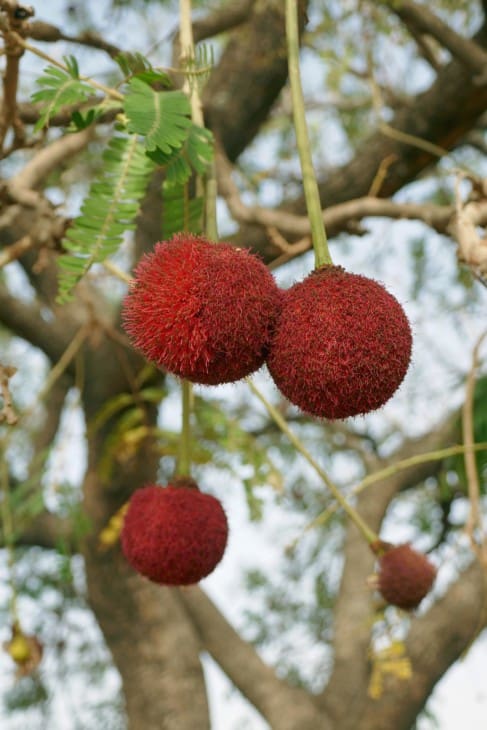
Unlike the locust trees previously listed, this tree doesn’t belong to the Gleditsia or Robinia genus and originates from Africa. It is a deciduous tree like the Honey Locust and also belongs to the pea family. Its pods contain sweet, nutritious pulp used for food and beverages, and the seeds are crushed and fermented for use as a seasoning.
All parts of the African Locust Bean are prized for their medicinal value in areas where they naturally occur. The tree grows up to twenty or thirty meters tall and is fire-resistant. It is not invasive like the other locust trees, but like the Honey Locust, its pods are edible.

